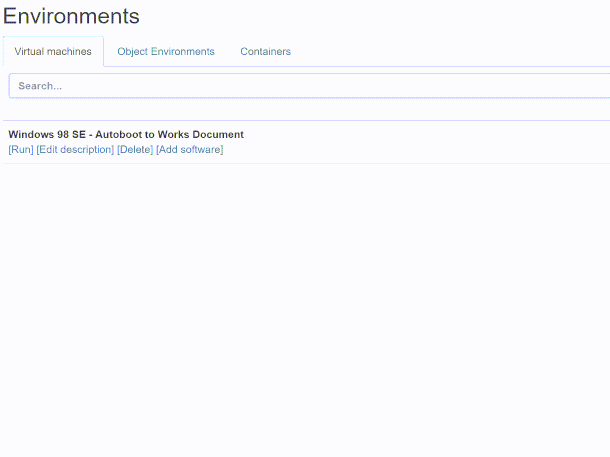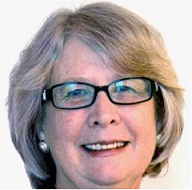Blog
Unless otherwise stated, content is shared under CC-BY-NC Licence
World Digital Preservation Day - that was fun!
Last year on International Digital Preservation Day (as it was then called) I asked the question “What shall I do for International Digital Preservation Day?” In that blog post I talked about the blogging and tweeting I’d been doing at the Borthwick Institute and ended with “...and of course I now have a whole year to plan for International Digital Preservation Day 2018 so perhaps I'll be able to do something bigger and better?!”
A year passes very quickly and any ideas I had for World Digital Preservation Day 2018 had to be shelved when I accepted an exciting new role of Head of Good Practice and Standards at the Digital Preservation Coalition.
After a hectic few months winding down, tidying up and handing over at the Borthwick Institute for Archives I finally arrived at the DPC on the 20th November.
What a time to start!
How does it feel? The psychology of digital preservation
Charles Miller is a former BBC documentary producer, currently working for a tech startup in London and studying for a Masters in History. Anchoring will be his second book.
In all discussions about digital preservation, there’s an impossible question to answer: how much should I keep? While institutions are limited by budgets and staff time, for individuals, it’s more personal. Decisions about deleting, and the very process of organising and preserving, bring out complicated emotions about family, nostalgia and sometimes grief.
It’s one of the issues I’m looking at in a book I’m writing about how the digital world has changed ideas about what we want to hang on to and how we can best do it.
Afterclap: WDPD for everyone, for ever
Afterclap (n) – the last person who claps after everyone else has stopped.
It’s Friday, so it must be Schiphol Airport Amsterdam. Here’s me at the departure gate for the flight home after a day that has lasted almost 48 hours and has crammed in a year’s worth of digital preservation news.
An airport lounge seems an appropriate place to reflect on World Digital Preservation Day. It’s practically home: my work involves so many airport lounges that, rather being an honorary lecturer at Glasgow University, I should really be an honorary air-traffic controller at Glasgow Airport. Schipol offers so many connections: in every one of them an emergent digital preservation need is arising, and in many an incipient digital preservation community is forming. There’s also a lot of time dependencies at airports too, a lot of verification of identities and checking of manifests: a lot of strong metaphors for our daily work. These challenge us to connect but remind us that if we hang about too long then our digital preservation work is going to become a lot harder and a lot more expensive. As with aeroplanes, if you want digital preservation to be difficult and costly just ignore the repeated calls to get on board.
Current State of Digital Preservation at Library and Archives Canada
Faye Lemay is Digital Preservation Manager at Library and Archives Canada
This is part 3 of a 4-part series on Digital Preservation at Library and Archives Canada. Part 1 addressed “Building the Momentum for Change” and Part 2 talked about “Learning from our past”.
Although our recent efforts have been focussed on program development, the DP team has also sought to stabilize and grow its digital preservation infrastructure: specifically the LAC Digital Archive, which serves as the repository of preservation masters.
Thinking Creatively to Understand Complexity: A Workshop for the UK Legal Deposit Libraries’ Emerging Formats Project
Caylin Smith is the Legal Deposit Libraries Senior Project Manager for the British Library
Earlier this month, the British Library hosted a workshop for the Legal Deposit Libraries’ Emerging Formats project. The purpose of the workshop was to engage stakeholders and look at some new approaches to address challenges the project has identified.
In this post, Caylin Smith, project manager for the Legal Deposit Libraries and a researcher on the Emerging Formats project, outlines the importance of Non-Print Legal Deposit in the UK, provides background information on the Emerging Formats project and in-scope content, as well as introduces the workshop.
Sara Day Thomson of the DPC then describes her experience of the workshop and how the Emerging Formats project reflects broader trends in digital preservation.
Against Entropy: An Update
Sheila Morrissey is Senior Researcher at Ithaka S+R, based in New York
If there’s one thing digital preservationists understand, it’s the importance of continual investment in infrastructure. That includes our own technical infrastructure – the systems we rely on to collect and manage and deliver digital objects over the very long term.
On the first World Digital Preservation Day, we were just at the mid-point of a two-year project to rebuild Portico’s technical preservation infrastructure, pretty much from the ground up. At the end of September of this year, we closed out our “NextGen” project as scheduled.
As we noted in last year’s WDPD day of blogging, a big motivation for our “gut rehab” project was the need to grapple with issues of scale – with geometric growth across pretty nearly every measure of content streaming into the Portico archive:
Sustaining your own Digital Preservation Efforts
Nancy McGovern is Director of Digital Preservation at MIT Libraries
I love what I do! My role combines research, instruction, and practice and has since I started at Cornell as the Digital Preservation Officer in 2006 - that means by design I never have to stop doing what I am doing to work on what I want to do, which is amazing.
Recap of Born to Be 3D Forum Hosted by the Library of Congress
Kate Murray and Jesse Johnston are B2B3D Program Coordinators and work at the Library of Congress in Wasghington DC, USA
On November 2, 2018, the Library of Congress hosted Born to Be 3D: Digital Stewardship of Intrinsic 3D Data (#B2B3D), a small group forum to discuss stewardship of born digital 3D data. Born-digital 3D content is an emerging research and technology area. Digital preservation approaches and stewardship requirements for this content are not yet mainstream, but the impact and influence of this content is undeniable. In its role as a convener, the Library’s goal for sponsoring B2B3D is to support and amplify existing research projects while also bringing together a “sampler” of 3D-related development across a wide spectrum of stakeholders. The publication of the Library’s new Digital Strategy with renewed focus on driving momentum in our communities and building towards the horizon made this the ideal opportunity to engage in the building energy in the well-named Year of 3D.
Preservation Rights
Jared Lyle is an Archivist at the Inter-university Consortium for Political and Social Research (ICPSR), where he directs the Metadata and Preservation Unit which is responsible for Metadata, the Bibliography of Data-Related Literature and Digital Preservation. He also serves as Director of the Data Documentation Initiative (DDI), an international metadata standard for describing survey and other social science data.
While my thoughts about digital preservation tend to gravitate to issues of file format longevity, on the occasion of this World Digital Preservation Day I've been thinking quite a bit about preservation rights, especially from the perspective of a data custodian. Why the recent shift in concentration? The repository where I work, ICPSR, a data repository for social and behavioral science data, has applied for the CoreTrustSeal Data Repository certification. ICPSR has participated in several repository audits and certifications. In 2006, it was a test case for Trusted Repositories Audit & Certification (TRAC). ICPSR was one of the first six data repositories to earn the Data Seal of Approval in 2011. ICPSR earned the World Data System certification in 2013. CoreTrustSeal Data Repository certification replaces the DSA certification and WDS Regular Members certification.
Designing a Universal Virtual Interactor (UVI) for digital objects
Euan Cochrane is Digital Preservation Manager at Yale University Library
In the EaaSI program of work we're developing the ability to click on a link to a digital object (for example in a library’s catalogue or an archival finding aid) and have it "automagically" open in a representative version of the “original” software, within your web browser, using an emulator. For example, the gif below demonstrates clicking a link to automatically open a Microsoft Works file running in Windows 98 within a web browser[1].




















































































































































